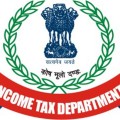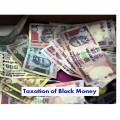Equalisation Levy Rules 2016
[Notification No. 38/2016 dated May 27, 2016]
Salient Features of Equalisation Levy as introduced by Union Budget 2016-17
S.O. 1905(E) – In exercise of the powers conferred by sub-section (1) and sub-section (2) of section 179 of the Finance Act, 2016 (28 of 2016), the Central Government hereby makes the following rules for carrying out the provisions of Chapter VIII of the said Act relating to Equalisation levy, namely:-
1. Short title and commencement. – (1) These rules may be called the Equalisation levy Rules, 2016.
(2) They shall come into force on the 1st day of June, 2016.
2. Definitions. – In these rules, unless the context otherwise requires,-
(a) “Act” means the Finance Act, 2016 (28 of 2016);
(b) “Form” means Forms appended to these rules.
3. Rounding off of consideration for specified services, equalisation levy, etc. – The amount of consideration for specified services and the amount of Equalisation levy, interest and penalty payable, and the amount of refund due, under the provisions of Chapter VIII of the Act shall be rounded off to the nearest multiple of ten rupees and, for this purpose any part of a rupee consisting of paise shall be ignored and thereafter if such amount is not a multiple of ten, then, if the last figure in that amount is five or more, the amount shall be increased to the next higher amount which is a multiple of ten and if the last figure is less than five, the amount shall be reduced to the next lower amount which is a multiple of ten.
4. Payment of Equalisation levy. – Every assessee, who is required to deduct and pay equalisation levy, shall pay the amount of such levy to the credit of the Central Government by remitting it into the Reserve Bank of India or in any branch of the State Bank of India or of any authorised Bank accompanied by an equalisation levy challan.
5. Statement of specified services. – (1) The statement of specified services required to be furnished under sub-section (1) of section 167 of the Act shall be in Form No. 1, duly verified in the manner indicated therein, and may be furnished by the assessee in the following manner, namely:-
(i) electronically under digital signature; or
(ii) electronically through electronic verification code.
(2) The statement in Form No.1 in respect of all the specified services chargeable to equalisation levy during any financial year shall be furnished on or before the 30th June immediately following that financial year.
(3) The Principal Director-General of Income-tax (Systems) shall, for the purpose of ensuring secure capture and transmission of data, lay down the specific procedures, formats and standards and shall also be responsible for evolving and implementing appropriate security, archival and retrieval policies in relation to furnishing the statement under sub-rule (1).
Explanation: For the purposes of this rule “electronic verification code” means a code generated for the purpose of electronic verification of the person furnishing the statement of specified services as per the data structure and standards laid down by the Principal Director-General of Income-tax (Systems).
6. Time limit to be specified in the notice calling for statement of specified services. – Where an assessee fails to furnish the statement within the time specified in sub-rule (2) of rule 5, the Assessing Officer may issue a notice to such person requiring him to furnish, within thirty days from the date of service of the notice, the statement in the Form prescribed in rule 5 and verified in the manner indicated therein.
7. Notice of demand. – Where any levy, interest or penalty is payable in consequence of any order passed under the provisions of Chapter VIII of the Act, the Assessing Officer shall serve upon the assessee a notice of demand in Form No. 2 specifying the sum so payable:
Provided that where any sum is determined to be payable by the assessee under sub-section (1) of section 168 of the Act, the intimation under the said section shall be deemed to be a notice of demand.
8. Form of appeal to Commissioner of Income-tax (Appeals). – (1) An appeal under sub-section (1) of section 174 of the Act to the Commissioner of Income-tax (Appeals) shall be made in Form No. 3 in the following manner, namely:-
(i) electronically under digital signature; or
(ii) electronically through electronic verification code.
(2) The form of appeal referred to in sub-rule (1), shall be verified by the person who is authorised to verify the statement of specified services under rule 5, as applicable to the assessee.
(3) Any document accompanying Form No.3 shall be furnished in the manner in which the Form No.3 is furnished.
(4) The Principal Director General of Income-tax (Systems) shall-
i. lay down the procedure for electronic filing of Form No.3;ii. lay down the data structure, standards and manner of generation of electronic verification code, referred to in sub rule-(2), for the purpose of verification of the person furnishing the said form; and
iii. be responsible for formulating and implementing appropriate security, archival and retrieval policies in relation to the said form so furnished.
9. Form of appeal to Appellate Tribunal.– An appeal under sub-section (1) or sub-section (2) of section 175 of the Act to the Appellate Tribunal shall be made in Form No.4, and where the appeal is made by the assessee, the form of appeal, the grounds of appeal and the form of verification appended thereto shall be signed by the person specified in Form No.4, as applicable to the assessee.
Form No.1 Form No.2 Form No.3 Form No.4
Source: http://www.incometaxindia.gov.in/communications/notification/notification382016.pdf





